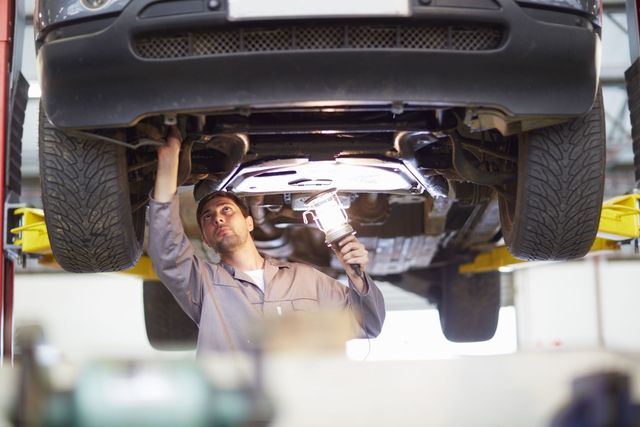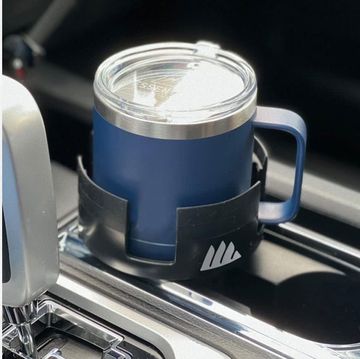The more you drive your car, the more it costs to keep up and running. Besides just endless re-fueling, cars also burn through engine oil, brake pads, spark plugs, and timing belts, too. As your car racks up these miles it can fall victim to even more problems, like a bad starter motor, leaky radiator, or cracked engine mounts.
But how much does it cost to keep a car on the road? First things first— what kind of car you drive? Each of these cars are different, some being low-mileage weekend cruisers and others high-mileage daily workhorses. With this data, we've been able to make determinations about which cars have the highest and lowest maintenance costs as the miles go up and up. We've also figured out what kind of maintenance become more common over time.
To do this, we examined how much it costs to maintain a car from 0 to 25,000 miles, then compared that to how much it costs from 25,001 to 50,000 miles. We estimated maintenance costs by distance by taking total costs for each mileage category, then dividing it by the number of oil changes. Assuming oil changes occur every 5,000 miles, we can find the cost of maintenance per mile.
We found that for the first 25,000 miles the average car costs $1,400 to maintain. Unsurprisingly, costs rise significantly up to the 100,000 mile mark, but taper off soon after. This is because maintenance costs simply top out, consumable parts are replaced, or drivers upgrade to a newer car once maintenance costs exceed the car's value.
But how much does your car cost to maintain over time? We listed which brands are the most and least expensive to maintain for their first 75,000 miles on the road.
As you'd expect, entry-level cars like Hyundai, Toyota, and Honda are on the cheaper end, while high-end brands like Mercedes-Benz and BMW are among the most expensive. Given that those brands cost about three times more to maintain than the others, it's clear that if you want luxury and performance, you're going to pay for it.
But for most cars, 75,000 miles isn't anywhere near the end, so we stretched our data to 150,000 miles.
It's interesting to look at how certain brands change position between 75,000 to 150,000 miles. Some that are inexpensive up front have higher maintenance costs as their mileage increases – just look at how Hyundai and Kia drop down from the top of the 0 to 75,000 mile list. BMW, Mercedes-Benz, and other high-end brands remain among the most expensive to maintain, but Subaru impresses by actually increasing its rank as miles accumulate. However, Toyota and sub-brand Scion are among the least expensive to maintain when they're new, and improve their cost-per-mile figures even as mileage increases.
However, while we can look at maintenance costs for brands as a whole, it's also important to look at specific vehicle models. Not all models from one company cost the same to maintain.We looked at the specific models that are most and least expensive to maintain over the first 75,000 miles and listed the top ten for each:
With only $2,800 in maintenance costs, the fuel-sipping Toyota Prius is the least expensive by a good margin. Other small cars from Asian automakers take up spots on the top-ten least expensive, but the big American-made Chevrolet Tahoe comes in as a surprise.
Once again, we stretched this model-specific data out to 150,000 miles:
The Prius retains its top spot, and a few other Toyotas make their way onto the least-expensive list. But it's the most-expensive list has a few surprises. The Ford Mustang, one of the most popular sports cars on the market, actually exceeds BMW for maintenance costs. Also, it seems clear that certain Acura models don't share the same longevity as cars from parent company Honda.
So what are the most and least common problems plaguing all these cars?
We turned to our data to determine the most common issues and how likely they are to occur. For example, if one in ten cars needs new spark plugs between 25,000 and 30,000 miles, then cars in that mileage range have a 10% chance of needing new spark plugs every 5,000 miles. However, if one in four cars between 100,000 and 105,000 miles need replacement spark plugs, the probability is 25%.
Besides spark plugs, the most common maintenance issues are brake pads and batteries. This makes sense, as these are consumable parts with finite use ranges. Brake pad problems peak at 50,000 miles, and spark plugs at 100,000 miles, then taper off, most likely because these parts get replaced and then work reliably again.
Perhaps unsurprisingly, less obvious fixes like the car not starting or the Check Engine Light coming on become much more common as well. There's a huge range of things that could cause these issues, so it's not as clear to pinpoint a cause. The good news is that there are resources available to help diagnose any issues.
Alex Leanse is a lead writer for yourmechanic.com, a car site dedicated to providing advice on how to keep your car running, and sending mobile mechanics to your home or office for maintenance and repair services.














